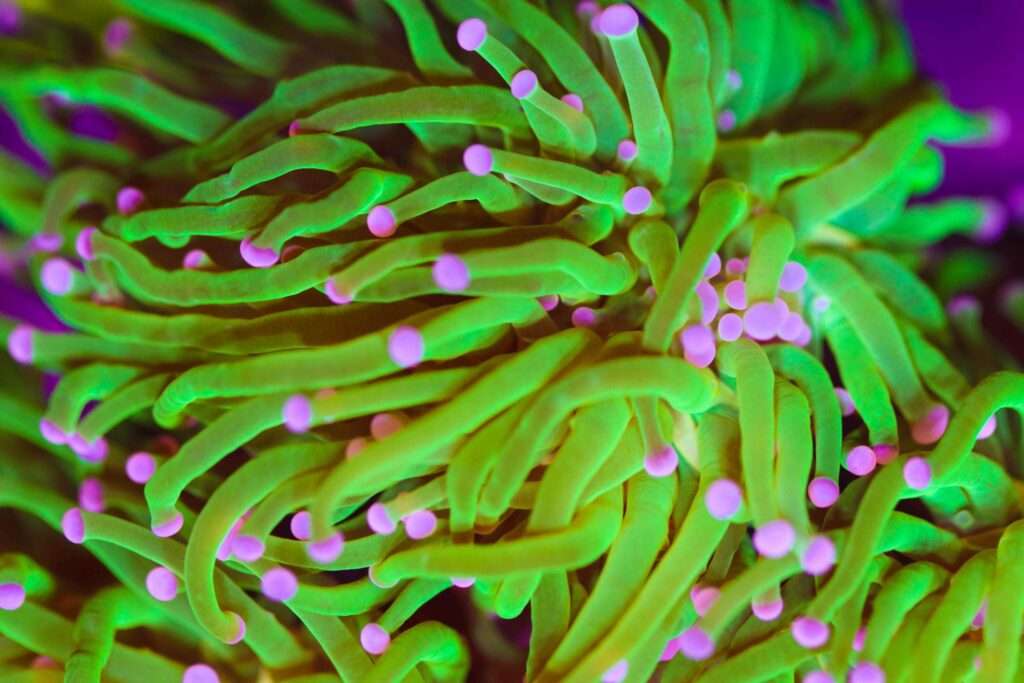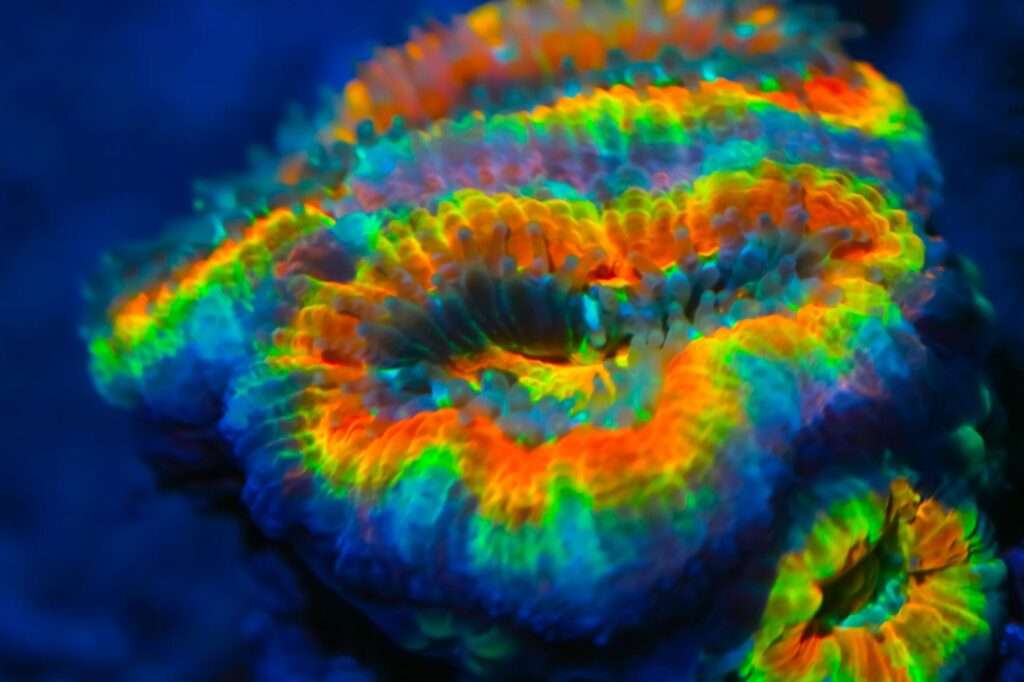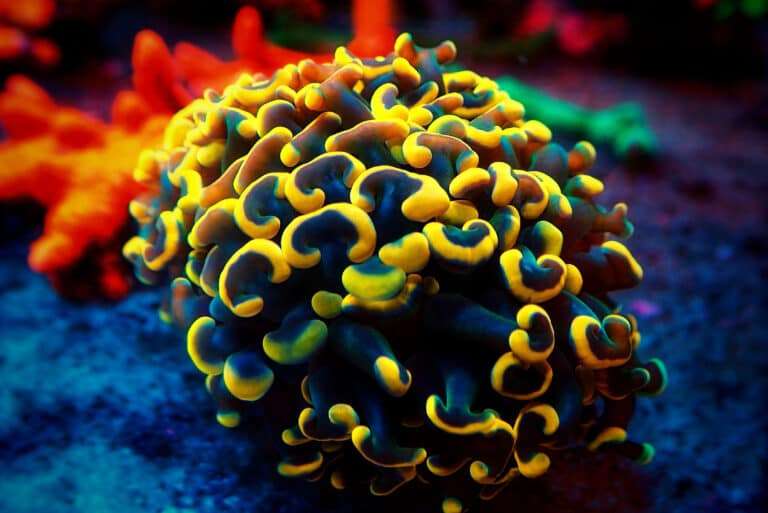
The magnificent Torch Coral stands out from other Euphyllia species thanks to its flowing tentacles. Their common name derives from the contrastive cream, green, or white color of their tips. Additionally, it is a branching species.
Location affects the color of the torch coral. Others are a mustard color from the Marshall Islands, deep chocolate brown with white points, grayish blue with bright green tips, and so forth. Corallite walls develop on the margins of their huge colonies. Only partially throughout the night do polyps extend.
Habitat
Chamisso and Eysenhardt described the torch coral, Euphyllia glabrescens, in 1821. Other names for this coral include Branching Anchor Coral, Pom Pom Coral, Brain Trumpet Coral, and (believe it or not!) Branch Coral . There are several different reef settings where E. glabrescens can be found. They thrive in gently murky waters down to 131 feet (40 m) in colonies and like strong indirect light. To assist them catch small prey and protect themselves from predators, they have stinging cells.
Morphology
The morphology of the polyp, rather than just its delicate skeletal structure, is more important in identifying the Torch Coral E. glabrescens. The polyps, which can completely retract into the skeleton, develop vast colonies with corallite walls forming on the edges. Only partially throughout the night do polyps extend. This species also has branches. The Torch Coral has straight, unbranched tentacles that are typically quite long and thin, negating the need for sweeper tentacles. The tentacles’ colors range from gray-green, dark brown or gray-blue to white, cream, or green near their tips. The length of each tentacle can increase by two to three times when the animal is feeding. Some colonies can grow to be over 3 feet tall (1 m). Unknown life expectancy.
In Captivity

- Feeding
Euphyllia corals have evolved a number of feeding techniques. Many of its nutrients are obtained through an interaction of symbiotic with sea algae called zooxanthellae. They can also take in dissolved organic substances and planktonic creatures as well as food particles from the water column. Mysis, brine shrimp, krill, and other small foods can be fed to animals in captivity. Surprisingly, these corals can also consume significantly bigger portions of food. Feed the coral the whole organism by chopping or dicing up whole fish or shrimp. Because different animal parts have varied nutritional characteristics, feeding your Euphyllia in this manner will provide positive effects. Since these corals are constantly hungry, feeding them as needed with a variety of meals is beneficial.
- Social Interactions and Compatibility
Euphyllia corals should be placed far from any other corals since they might be aggressive if they come in contact with them. The Torch Coral is friendly to members of its own genus, but it will attack members of other genus families. In particular, several Sinularia species, the E. glabrescens is sensitive to aquariums with extensive collections of soft corals. Their sweeper tentacles, which may grow to exceed 10″ (25 cm) in length when hungry, are a hazard to adjacent corals. Regular feedings will help to solve this issue.
Table





